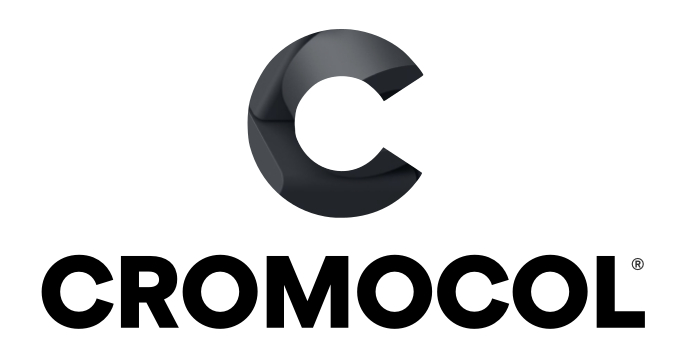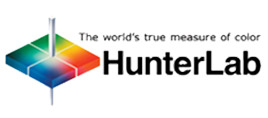Colour measurement – Textile Sample Presentation by HunterLab
The variety of techniques that can be used in presenting textiles samples to ensure valid, repeatable color measurements.
Abstract
The goal of instrumental color measurement is to obtain repeatable numeric values that correspond to visual assessment. The method of sample preparation, sample presentation and instrument geometry used for measurement can impact measurement precision and the correlation of the measurement to visual assessment.
SAMPLE PREPARATION
One color measurement method for fiber or yarn wound on a cone or bobbin is to measure the
fiber directly. In this case no sample preparation is required. However, a positioning device is typically
used at the instrument measuring port to consistently present the wound fiber to the instrument (discussed
further under Sample Presentation).
A second method is to prepare a wad of random fibers large enough such that light cannot
penetrate through it and place it inside a container with a window in the bottom. Place a specified
weight on top of the yarn and measure through the glass. A more consistent and optimal method
would be to use a compression cell in which a specified amount of yarn by weight
is placed in a sample cup and a consistent air pressure is applied to a piston to compresses
the yarn tightly against the cup window. Using consistent pressure is important since a consistent
yarn density is needed for repeatable color measurements. As the yarn is being measured
through a glass interface, the instrument will measure the sample as a duller color than it
actually is. Methods of compensating for glass will be discussed in Sample Presentation.
Another method that gives measurements that correlate well with visual assessment is to wind
the yarn closely and parallel on a card to a sufficient thickness to prevent show-through.
Commercial cardwinders are available for this purpose to ensure consistent tension and a constant
number of windings. Tension must be consistent on the card but not so high as to cause the yarn to
stretch. The card should have enough stiffness that it does not bend when the yarn is wound on it. If the
card is bent when the yarn is wound, the front side will give a different measurement than will the back.
The card can be made of paper board, plastic or metal and should be a uniform and neutral in color.
Ensure that paper board or plastic cards do not contain UV fluorescing agents.
Skeins of yarn can be prepared by clamping or taping one end to the edge of a rigid
backing material, stretching the skein across the form keeping the strands of yarn parallel and
clamping or taping to the other edge of the form. Commercially available skein holders can
be used for this purpose. The yarn can also be knitted into a sock for
measurement. Since a knitted sock is flat, it can be measured without a support or compression
device. A disadvantage is that knits tend to easily stretch which causes the opacity of the fabric
to vary. Variation in tension will cause the holes in the fabric to change size, and allow more or
less light to pass through. When this occurs, the measurement instrument will “see” more or less of
the sample backing material and will give varying measurement results. When necessary to increase
the opacity of the sample,the knitted sock can be folded into multiple layers. The number of
layers can be increased until the reading does not change significantly.
However as can happen with thicker socks, the sample may “pillow” or protrude into the
measurement port of the instrument. In addition, Knitted socks may have distinct lines or textures
which can effect measurement repeatability. Averaging techniques can be used to minimize this
problem and will be discussed later in this paper.
SAMPLE PRESENTATION
Sample presentation to the instrument can effect the measurement results in terms of both
the measurement value obtained as well as the repeatability of the measurement. In the case of
yarn measurement the primary areas of concern are consistency of sample presentation, sample
pillowing and sample directionality.
If a cone or package of yarn is being measured directly with a portable or bench instrument,
it is important that a positioning device be used to reproducibly position the sample at
the instrument measuring port. This is because the sample is curved and does not lie flat on the
sample port and thus does not completely fill the port. Any position change by rocking the cone slightly
in either direction would cause a reading change. By using a cradle-shaped positioning device at the
instrument sample port, having a radius similar to the cone or bobbin, will position the sample consistently for
measurement.
When measuring yarn wound on a card or skein holder, measuring a knitted sock of the yarn sample and
in some cases measuring the yarn cone or package, sample pillowing may occur. This occurs when the
sample is so thick and soft that it protrudes into the instrument sample port causing poor measurement
repeatability. The magnitude of this problem depends on the optical characteristics of the instrument being
used as well as the sample being measured. When pillowing is a problem the sample can be measured by
pressing it against the instrument equipped with a glass sample port. This will typically give more repeatable
results. As previously mentioned, since the yarn is being measured through a glass interface, the instrument
will measure the sample as a duller color than it actually is. This is because glass causes low reflectance
values to be higher, and high reflectance values to be lower. For quality control applications when the color
difference is being measured and the “standard” was measured the same way, the error introduced by the
glass is less significant. However accuracy can be improved by calibrating the instrument through glass, or
when a higher absolute accuracy of measurement is desired, a glass correction can be used. This equation
is for sphere (d/8°) geometry instrumentation with the specular component included.
Glass Correction Factor = Rλ = (Rg + Tc – 1.0)/(Rg + Tc – 1.0 – (Td * Rg) + Td)
where:
• Rg = measured %R behind glass
• Tc = transmittance of glass to collimated light (normally equal to 0.92 for glass with a refractive
index of 1.50 and no absorption)
• Td = transmittance of glass to diffuse light (nominally equal to 0.87 for glass as described above)
• Rλ = corrected % reflectance with no glass
Most yarn samples will have some level of directionality. Directionality is when the sample
has distinct lines or texture that when measured at different angles of rotation, yield varying results.
Averaging multiple placements of the sample with a 90 degree rotation between readings will
minimize the effect of directionality.
SAMPLE AVERAGING
Averaging multiple readings of samples can compensate for variations in pillowing, directionality,
nonuniformity as well as other variables that occur when measuring yarn. Ideally, multiple preparations of
the sample will be measured and averaged. However in production environments the ideal approach is not
always followed. As a minimum, one production sample should be measured and averaged in groups of 2
(2, 4, 6…) for each measurement with a 90 degree rotation between each reading.
For card wound and knitted samples it is not suitable to simply place the sample on the port and rotate the
sample without removing it as there will be no averaging of the variation in pillowing and non-uniform color
within the sample. The best approach is to take and average several readings of the sample for multiple
preparations or at multiple positions and at multiple angles of rotation. An appropriate sampling number for
each significantly different yarn type should be determined. One approach is to determine a statisticallysound
sampling number. This can be done by first selecting a representative sample of the product…
GEOMETRY
Color measurement instrument geometry generally falls into one of two categories – a diffuse d/8° sphere
geometry or a directional 45°/0° or 0°/45° geometry. For sphere instruments, the source light is projected
into the sphere and is diffused by the sphere coating. This diffused light is incident on the sample and
the light reflected at 8° is measured. Typically sphere instruments include the specular component in the
measurement and have a 25 mm (1 inch) diameter sample port. For 45°/0° geometry instruments the light
source illuminates the sample at 45° and the light reflected at 0° (normal to the surface) is measured. The
45°/0° geometry excludes the specular component and frequently have measurement ports that are
50 mm (2 inch) in diameter giving a better optical average of the sample. The following table gives the
recommended instrument geometry for the various yarn sample preparation methods.
Cone or Bobbin Package – Directional 45°/0° or 0°/45° geometry
Loose Fiber Compressed Against Glass – Diffuse d/8° Sphere or Directional 45°/0° or 0°/45° geometry
Card Wind – Diffuse d/8° Sphere or Directional 45°/0° or 0°/45° geometry
Skein Holder – Diffuse d/8° Sphere or Directional 45°/0° or 0°/45° geometry
Knitted Sock – Directional 45°/0° or 0°/45° is best; Diffuse d/8° Sphere is suitable
Conclusion
When measuring yarn it is important to select samples appropriately, use an
established measurement method, and handle the sample in a consistent manner.
1. Choose samples that are representative of the product
2. Prepare samples in the same manner each time
3. Present the samples to the instrument in a repeatable manner
4. When possible make multiple preparations of the sample and average the results
5. Remember that the measured results depend on sample preparation and
presentation of the sample as well as the instrument geometry
References
AATCC, Color Technology in the Textile Industry, Second Edition.
Hunter, Richard S., and Harold, Richard W., The Measurement of
Appearance, 2nd Ed., John Wiley and Sons, Inc. New York, NY USA 1987.
SAE J1545, Instrumental Color Difference Measurement for Exterior
Finishes, Textiles and Colored Trim.
About Hunterlab
HunterLab, the first name in color measurement, provides ruggedly dependable, consistently
accurate, and cost effective color measurement solutions. With over 6 decades of experience
in more than 65 countries, HunterLab applies leading edge technology to measure and
communicate color simply and effectively. The company offers both diffuse/8° and a complete
line of true 45º/0º optical geometry instruments in portable, bench-top and production in-line
configurations. HunterLab, the world’s true measure of color.

